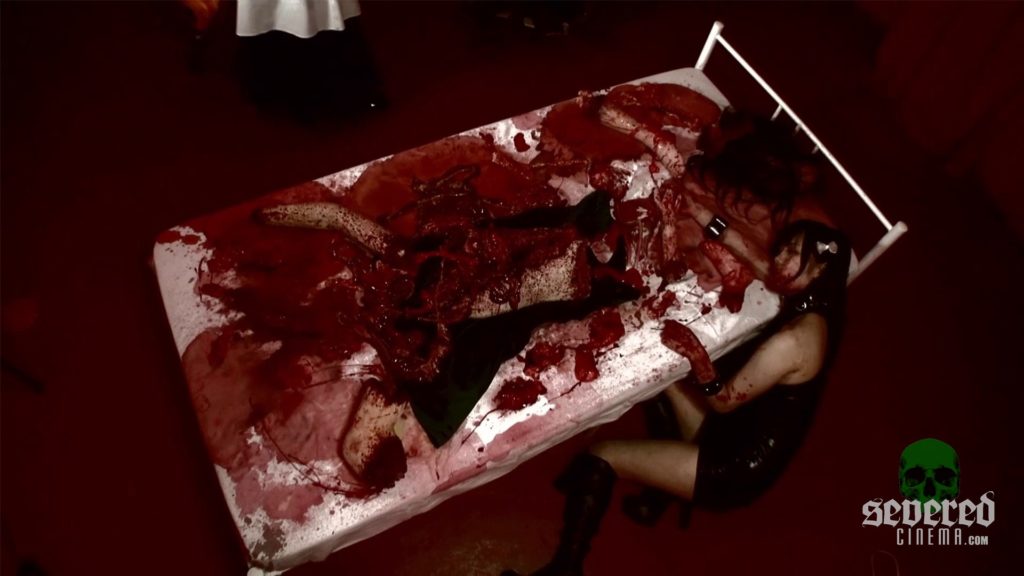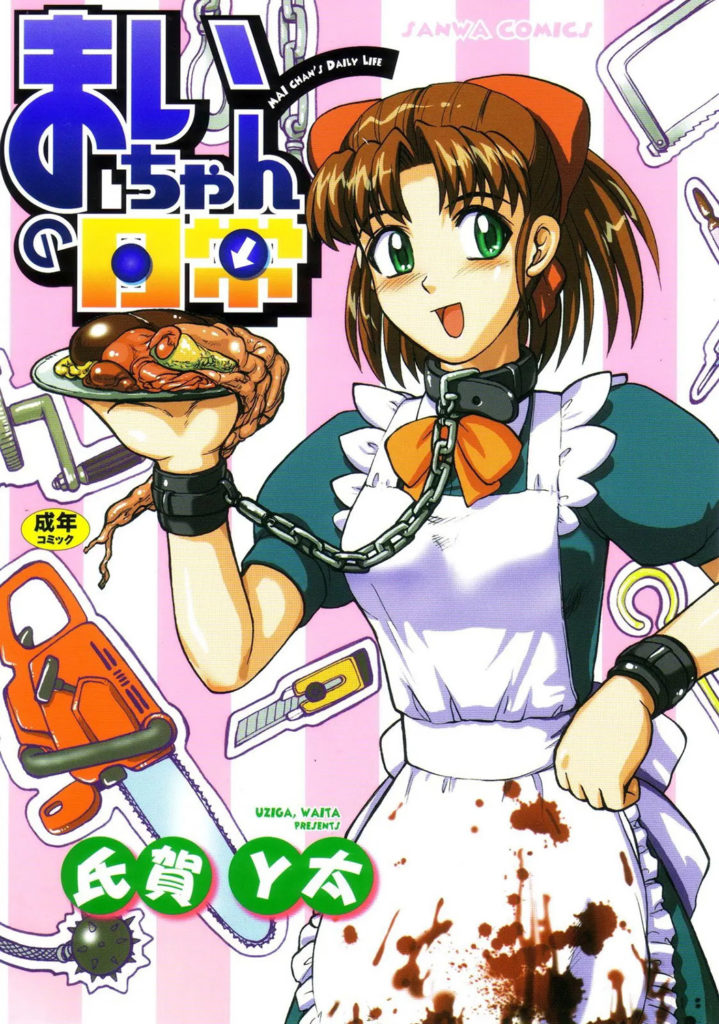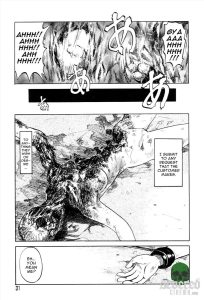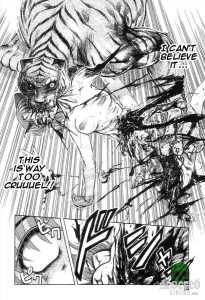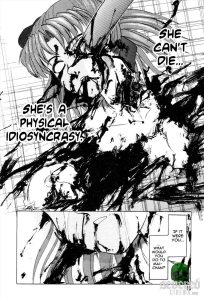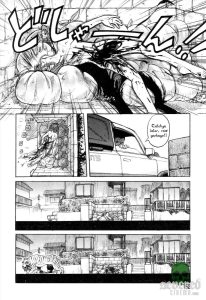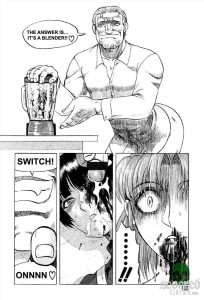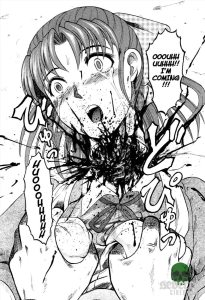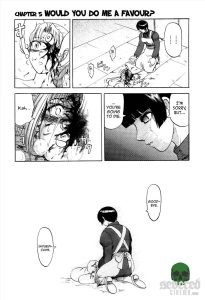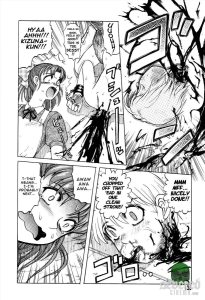Mai-Chan’s Daily Life: A Manga to Film Retrospective!
Sick, disgusting, shameful, disturbing, and unique. All words that can describe the works I will be discussing today. Mai-Chan’s Daily Life is one of those titles that instantly strikes fear or unease into the hearts of those who are familiar with the work. The manga is a “classic” of the ero-guro (sometimes abbreviated to simply “guro”) movement. For those unfamiliar with ero-guro it is a genre of media, in particular manga, that focuses on eroticism, sexual corruption, and decadence, and combines sexual themes with extreme grotesque content. These works are typically pornographic in nature and feature strong depictions of horror, blood, and dismemberment. Perhaps the most well-known ero-guro work, Mai-Chan’s Daily Life was serialized in Ayla Deluxe magazine and was written and illustrated by mangaka Waita Uziga. Infamous even in the ero-guro community, Mai-Chan’s Daily Life is considered to be one of the most disturbing and shocking works of fiction ever produced and is extremely controversial. But is the manga worthy of this mystique? What about the film adaptation of the story? I asked myself these questions before consuming both the manga and film and came out the other end a changed person. The answer, dear reader, is a resounding yes. The manga is simply the most vile and disturbing piece of media I have ever encountered, and while I will not glamorize the content, I would like to warn those sensitive to topics of sexual abuse and torture to proceed with caution.
First, I’ll discuss the original manga. The story is quite simple, following a young maid simply referred to as “Mai-Chan” who has been gifted (or cursed) with the gift of immortality. Being an ero-guro work, this does not work out well for Mai-Chan. Mai-Chan is employed, or held captive, in a mansion that serves as a front for extreme torture and sexual debauchery. Along with Mai-Chan is a boy named Kizuna who has the same curse of immortality. A woman named Kaede serves as the chief maid of the mansion and a limbless woman named Sayurin, who serves as a sort of pet to Mai. There are also two customers named George Reitman and Erumo Muraki. The story is broken into 11-scenes, all of which are only loosely connected. Each story has Mai-Chan being mutilated and violated by a variety of weapons, evil clients, and even an escaped tiger at one point. Kizuna and Sayurin are involved in some of these scenes as well but are never the primary focus. Amputation, cannibalism, self-harm, suicide, infanticide, sexual assault, genital mutilation, and more splatter every page of this manga. For those wondering if this is truly as disturbing as whispers in the community make it out to be, it is. As an extreme horror fan, not much bothers me anymore. I might find a film to be distasteful or gross, but once the credits roll, I am able to go back to my day. Not so with this. I truly felt sick to my stomach after reading this, and it made me question my own boundaries when it comes to art. For this, I must give the manga credit. However, none of the content would be nearly as impactful if the manga was not well done. So, what about the quality of the work itself?
Mai-Chan’s Daily Life has above average artwork, and the encounters Mai-Chan has with clients are unique and creative. While the story is incredibly disgusting and disturbing, it is never boring, and the pacing is appropriate for the story that is being told. Some of the dialogue feels odd, and the writing is extremely over the top. I believe the work is meant to be a pitch-black comedy, but even so the dialogue does not fit the disturbing nature of the work. I’m a fan of gallows humour and am an avid lover of dark comedy but this work is one where the violence and disturbing content goes so far as to remove any sense of humour from the work in my eyes.
After reading up to this point, you might find yourself wondering how a manga like Mai-Chan could ever be adapted into a film. Released in 2014, Mai-Chan’s Daily Life: The Movie was released as a partnership between Waita Uziga and Fetis Works, the production company run by filmmaker Sade Satô, who is known for his Bloodrunner series of blood fetish JAV/horror films. However, unlike Sato’s previous work, which was more experimental, this film has a much more straightforward narrative. This in no way hurts the film. The film succeeds in a way the manga did not: it is darkly funny and never crosses many of the lines that the source material does.
Perhaps the biggest difference between the manga and the film is the greater focus on telling a cohesive story rather than the episodic approach of the manga. The film follows a new character, named Miyako, who is a young woman who applies to be a live-in maid for a wheelchair bound man at the mansion in which Mai-Chan resides. Miyako soon meets Mai-Chan, who becomes her mentor and friend. Miyako soon witnesses Mai-Chan’s ability to regenerate from injury, and soon develops a sexual desire to hurt Mai-Chan. As the film progresses Miyako begins to fall deeper in love with Mai-Chan, which means greater and greater violence towards Mai-Chan which culminates in a finale that truly has to be seen to be believed. At just over an hour the pacing of the film is brisk, and there isn’t a dull moment. The writing is surprisingly good, and I found myself invested in Mai-Chan and Miyako’s central romance. Underneath the blood and guts there’s a strangely romantic tone that is completely missing from the manga. This was a welcome change of pace from the bleakness of the source material, and I found myself enjoying the film significantly more than the source material. While Mai-Chan’s Daily Life is very fun and is sure to be enjoyed by many people, there are some flaws that need to be discussed.
The biggest flaw present in the film is the cinematography. While it isn’t bad per-se, the film has an unnatural look to it and the colours often look overly saturated. This leads to the film having an almost plastic look to it, and the odd lighting decisions also don’t help anything. There are also some very strange zoom in shots that happen seemingly at random, and these shots often last for a matter of a couple of seconds and took me out of the film every time they would occur. The special effects in the film also range from being very well done to being reminiscent of something you’d find at a party store. Sometimes these can be viewed within the same scene, and I found the effect it had on the film to be jarring. Still, these complaints are minor and didn’t significantly hurt my enjoyment of the film.
The original Mai-Chan’s Daily Life manga is an endurance test few people will want to endure. Those who do will find themselves wanting a shower after they complete it. The manga is incredibly disturbing and can only be described as vile, but fans of ero-guro will find much to like in it. The unique story and art will be appreciated by fans of the genre, but those who are new to the genre might want to start elsewhere. However, the film adaptation is a much more fun and easily digestible experience that all fans of splatter films should watch at least once. While there are minor flaws present, the film is unique in its themes and the dark humour and romance at the core of the film make it a great viewing experience that I highly recommend.
AKA: Mai-chan no nichijô, Mai-chan no nichijô, Mai-chan no nichijô: Chiniku no yakata
Directed by: Sade Satô
Written by: Sade Satô, Waita Uziga
Produced by: Zerai Naoi, Waita Uziga
Music by: Yuqwe.
Special Effects by: Effects Design
Cast: Miyako Akane, An Koshi, Shôgo Maruyama, Chiyoko Nameless, Soaco Roman
Year: 2014
Country: Japan
Language: Japanese (English Subtitles)
Colour: Colour
Runtime: 55min
Studio: Fetish, Uziga Works
Distributor: Salvation Films, TetroVideo
Manga: Ayla Deluxe, Sanwa Publishing



